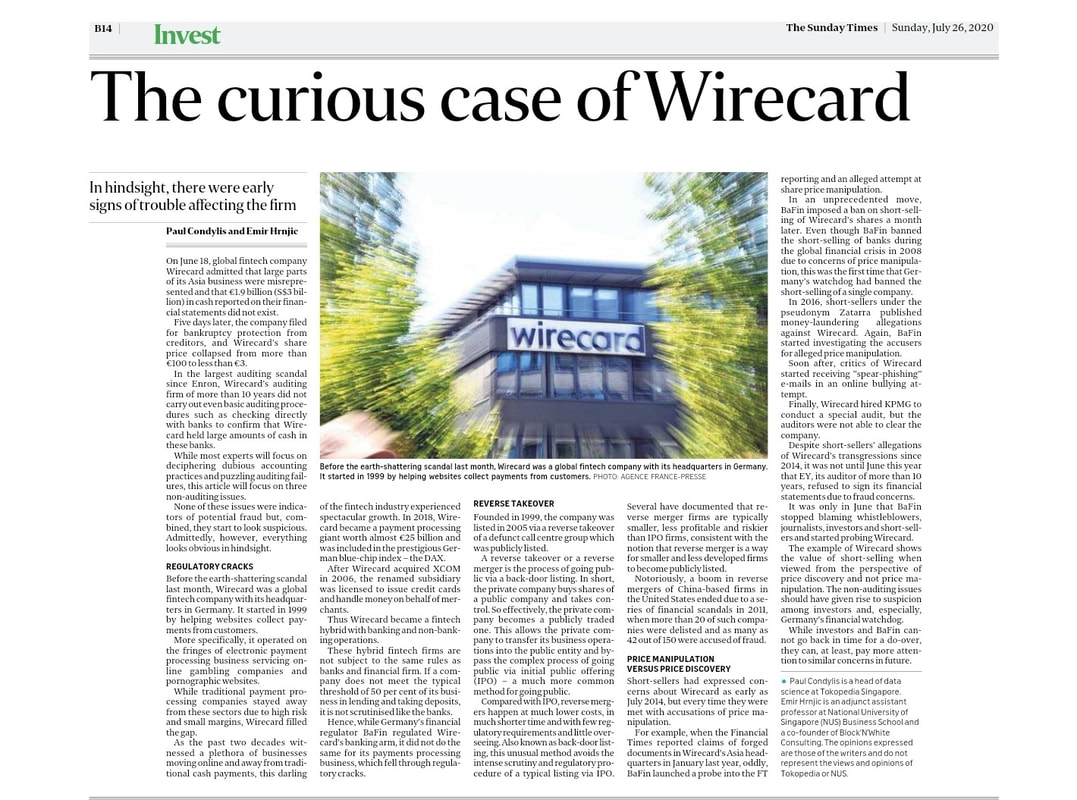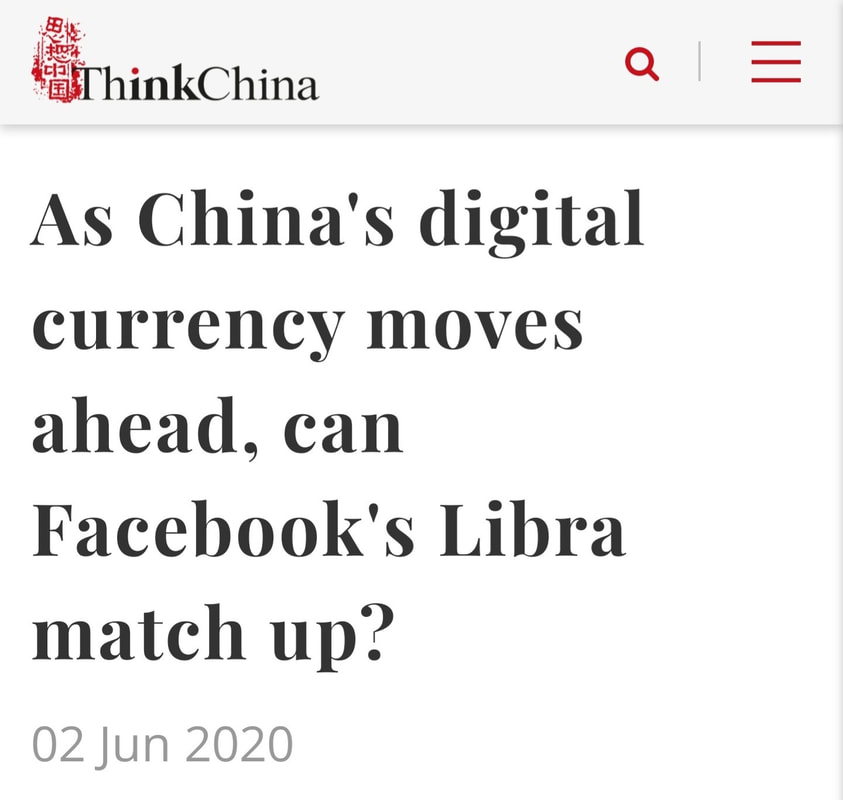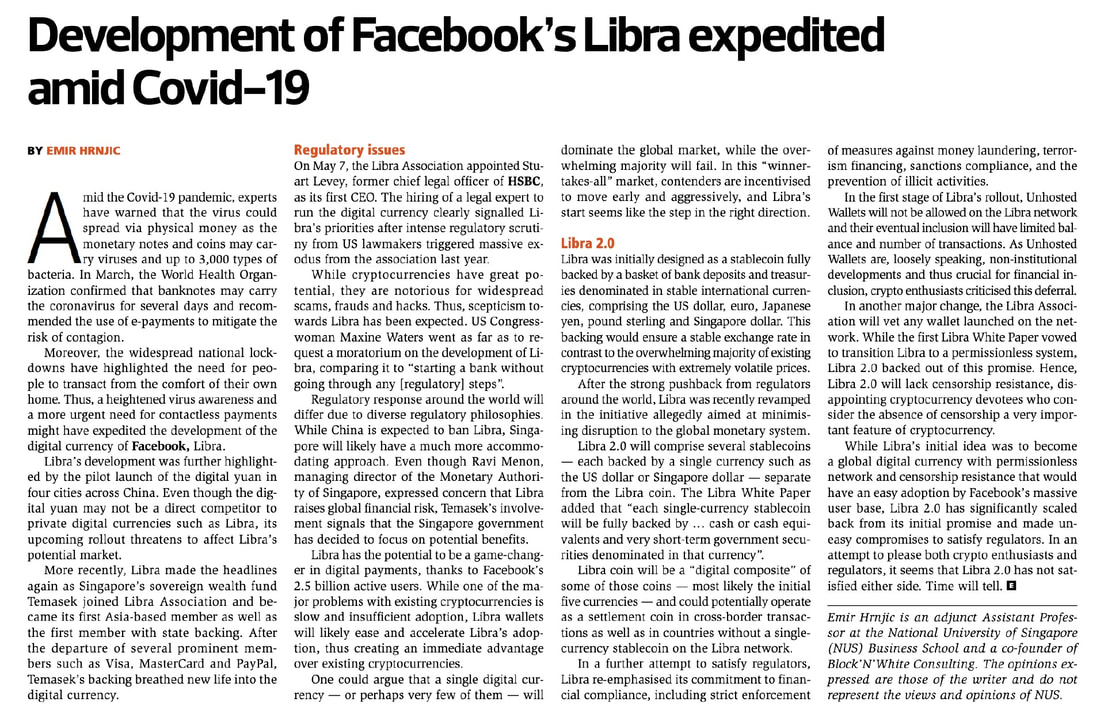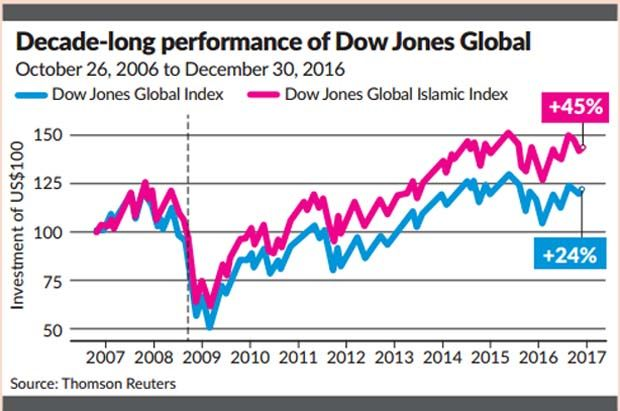Deciphering the cryptic world of Initial Coin Offerings (as published in Channel NewsAsia)5/30/2018 Channel NewsAsia
Deciphering the cryptic world of Initial Coin Offerings By Emir Hrnjic May 30, 2018 In the frenzied, rollercoaster world of cryptocurrencies, a new term has been grabbing investors’ attention: Initial Coin Offerings or ICOs. Last year, according to Forbes magazine, ICOs raised almost US$5bn; a huge leap from just US$101m in 2016. In 2018 some analysts expect upwards of US$18bn to be ploughed into ICOs, with Singapore fast becoming a leading Asian ICO market. To the uninitiated ICOs might sound like IPOs (Initial Public Offerings) – but they are vastly different. Despite the massive funds being channeled at them and the feverish interest surrounding them, most retail investors have little understanding of this innovative fundraising method. The ICO process typically begins with issuers publishing a white paper describing the product or service they are typically promising to build. Investors then buy coins or tokens which promise access to this product or service. Unlike IPOs, ICOs take place at a very early point in the life cycle of the company. Whilst the vast majority of IPOs are issued by well-established, profitable corporations (notable exceptions being during the Internet bubble of the late 1990s), ICO projects are in the development phase and have not made any profit. Moreover, ICO white papers generally do not reveal company financials and tend to be inconsistent and unreliable. IPO prospectuses on the other hand contain carefully audited financial statements and follow well-established regulatory procedure. As a consequence, the due diligence process with ICOs is simpler and shorter, without the armies of bankers, lawyers, and auditors typical of IPOs. This, however, is a double-edged sword as ICOs also have less transparency, less regulation, and offer essentially nothing in the way of protection for investors. Whilst shares in IPOs represent equity in the firm and votes to shareholders, ICOs generally represent tokens sold at a discount and are an asset rather than a security. ICO entrepreneurs maintain full control over the venture. Furthermore, whilst IPOs involve listing on an exchange - meaning companies need to satisfy various requirements including issuing audited quarterly financial statements and other disclosure - ICO listing requirements are almost non-existent. SUBSTITUTE FOR VENTURE CAPITAL FUNDING? There are several other differences, but in short ICOs are much riskier than IPOs. That does not mean however that they should be dismissed outright. Misleading name notwithstanding, it could be argued that ICOs are a useful substitute for Venture Capital (VC) funding due to similarities in the stage of company’s life cycle and risk profiles. This brings with it a different set of implications. The key function of the VC industry is funding start-ups, the overwhelming majority of which fail. It is a high-risk business, yet those few that do succeed often do so spectacularly and more than compensate for the many failures – think of Facebook, Google or Amazon. Famously, SoftBank’s US$20m VC investment in a start-up named Alibaba in 2000 grew to roughly US$58bn at its IPO fourteen years later – a mind-boggling 300,000 percent return. So why should these spectacular returns be reserved only for rich VC companies. Shouldn’t a regular guy get a shot? The answer is more complex than it seems. First, ICOs generally do not have a working product, making them even riskier than a regular start-up. VCs typically demand a “proof of concept” and a knowledgeable and/or experienced management team. Second, VCs often get a seat on the board in return for their investment, allowing them to advise as well as to monitor the company. They also provide much-needed connections to ambitious and energetic - but often inexperienced - entrepreneurs. ICO companies however do not entitle investors to any input in governance, even though they provide cheaper and quicker funds compared to VC investors. Finally, unlike illiquid VC investment, ICO tokens are typically liquid, which provides an easy exit strategy for ICO investors. However, this liquidity can also lead to short-termism as investors may pressure firms to focus on short-term results at the cost of more significant long-term benefits. ATTRACTED BILLIONS IN FUNDING ICO disadvantages notwithstanding, fueled by rapid advances in technology and headlines about exceptional returns, hundreds of promising crypto-related products have attracted billions of dollars via ICO funding. As a case in point, Ethereum’s ICO raised around US$20m in 2014 and has since evolved into the platform of choice for other ICOs. Meanwhile its market capitalization reached US$60bn. More recently, a WhatsApp–like chat platform, Telegram, raised a record US$1.7bn via ICO. However, as billions of dollars have poured in ICOs and scores of novice investors entered the ICO arena, so too have fraudsters, scammers and charlatans eager to exploit naïve investors. Perhaps the ultimate example of investors gullibility is PonziCoin, which was launched as “the world’s first transparent, decentralized Ponzi Scheme built on the blockchain.” Yet even this obvious parody attracted inexperienced investors. According to a recent survey, regulators most commonly identified ICOs and cryptocurrencies as high risk. Furthermore, while millennials were deemed most likely to use fintech products they were also most at risk of fraud from fintech products. Since millennials have the highest cryptocurrency ownership rate among different age groups, they seem most likely at risk from cryptocurrencies as well. DRIVING INNOVATION A recent academic study from NUS Business School found that several common factors lead to more innovations in companies, the most important of which is access to capital. Since many ICO ventures would not be able to raise comparable money via traditional sources, this implies that better-funded start-ups will likely lead to more innovations with potential benefits to economy and society. So whilst ICOs differ dramatically from IPOs or VC investments, a role is emerging for them to help fund projects that would not have received financial support from traditional sources. In turn there is a case for expecting that the better access to capital that they offer will likely lead to more innovations benefitting economy and society. Indeed, as more funds pour in crypto-related products and blockchain technology’s acceptance continues to spread, we can expect to see the proliferation of innovative blockchain applications. However, recent report found that almost half of ICO projects have already failed, while cryptocurrencies recently plummeted, thus, renewing concerns about overvaluation. Additionally, regulators ramped up warnings about suspicious ICO projects, while some ICOs were target of class action lawsuits. Indeed, Monetary Authority of Singapore (MAS) directed an ICO issuer to cease offering digital tokens that represented equity ownership in a company and warned eight exchanges in Singapore to stop trading in digital tokens that resemble securities. These negative developments may potentially cool off exuberant investors and deflate the hype over ICO which will eventually affect the demand for ICOs and, most likely, increase due diligence of ICO backed projects. As competition heats up and investors become more selective, we will witness a further evolution of the process, which will likely include standardization of carefully vetted and better organized white papers including more comprehensive risk disclaimers. Retail investors however should still be aware that despite the headlines and the hype, investing in ICOs at present is opaque, high risk, and offers little to nothing in the way of protection.
1 Comment
|






